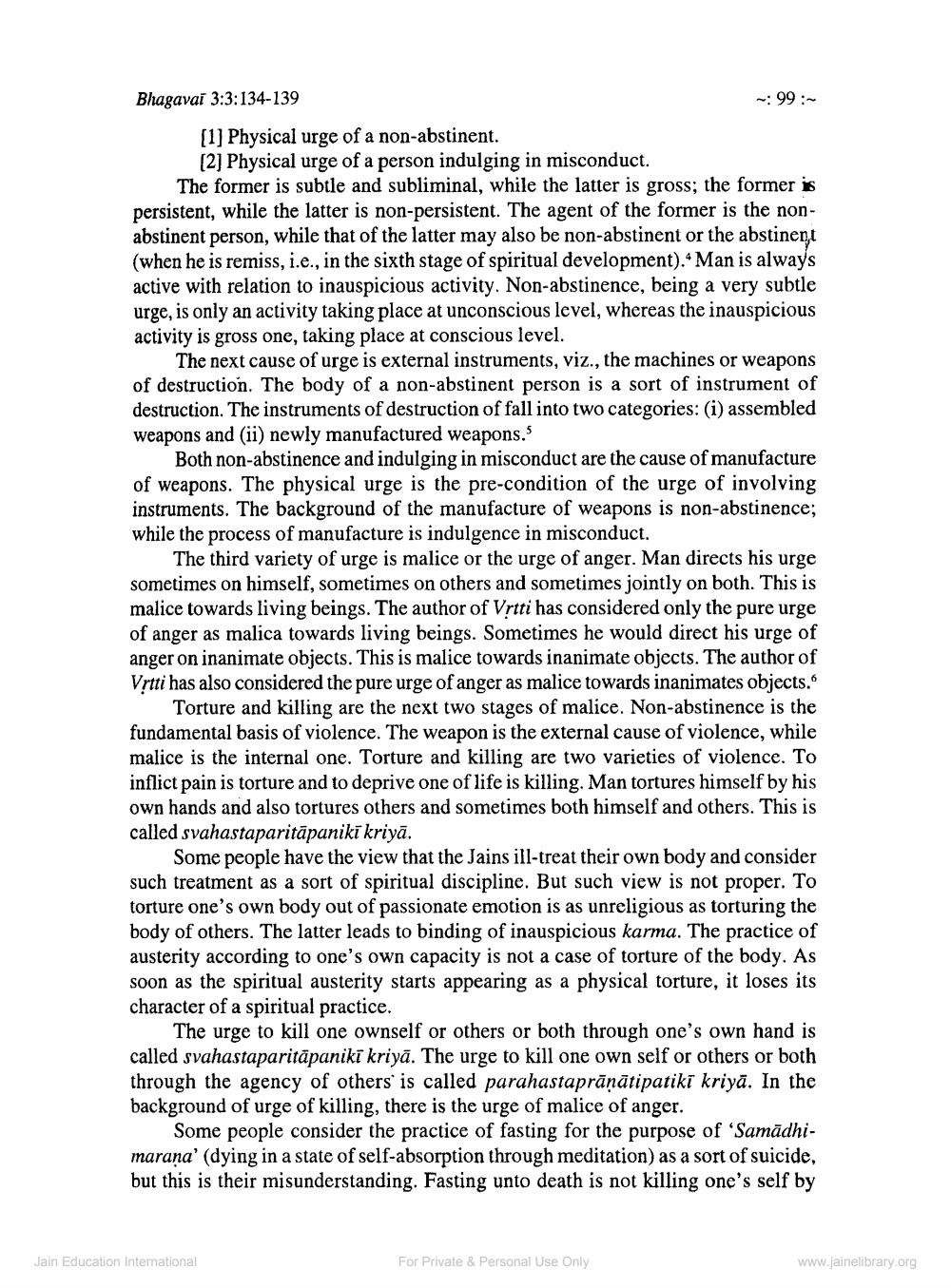________________
Bhagavai 3:3:134-139
-:99:[1] Physical urge of a non-abstinent.
[2] Physical urge of a person indulging in misconduct.
The former is subtle and subliminal, while the latter is gross; the former is persistent, while the latter is non-persistent. The agent of the former is the nonabstinent person, while that of the latter may also be non-abstinent or the abstinent (when he is remiss, i.e., in the sixth stage of spiritual development).* Man is always active with relation to inauspicious activity. Non-abstinence, being a very subtle urge, is only an activity taking place at unconscious level, whereas the inauspicious activity is gross one, taking place at conscious level.
The next cause of urge is external instruments, viz., the machines or weapons of destruction. The body of a non-abstinent person is a sort of instrument of destruction. The instruments of destruction of fall into two categories: (i) assembled weapons and (ii) newly manufactured weapons.
Both non-abstinence and indulging in misconduct are the cause of manufacture of weapons. The physical urge is the pre-condition of the urge of involving instruments. The background of the manufacture of weapons is non-abstinence; while the process of manufacture is indulgence in misconduct.
The third variety of urge is malice or the urge of anger. Man directs his urge sometimes on himself, sometimes on others and sometimes jointly on both. This is malice towards living beings. The author of Vrtti has considered only the pure urge of anger as malica towards living beings. Sometimes he would direct his urge of anger on inanimate objects. This is malice towards inanimate objects. The author of Vrtti has also considered the pure urge of anger as malice towards inanimates objects.
Torture and killing are the next two stages of malice. Non-abstinence is the fundamental basis of violence. The weapon is the external cause of violence, while malice is the internal one. Torture and killing are two varieties of violence. To inflict pain is torture and to deprive one of life is killing. Man tortures himself by his own hands and also tortures others and sometimes both himself and others. This is called svahastaparitāpaniki kriyā.
Some people have the view that the Jains ill-treat their own body and consider such treatment as a sort of spiritual discipline. But such view is not proper. To torture one's own body out of passionate emotion is as unreligious as torturing the body of others. The latter leads to binding of inauspicious karma. The practice of austerity according to one's own capacity is not a case of torture of the body. As soon as the spiritual austerity starts appearing as a physical torture, it loses its character of a spiritual practice.
The urge to kill one ownself or others or both through one's own hand is called svahastaparitāpaniki kriyā. The urge to kill one own self or others or both through the agency of others is called parahastaprānātipatiki kriyā. In the background of urge of killing, there is the urge of malice of anger.
Some people consider the practice of fasting for the purpose of 'Samādhimarana' (dying in a state of self-absorption through meditation) as a sort of suicide, but this is their misunderstanding. Fasting unto death is not killing one's self by
Jain Education International
For Private & Personal Use Only
www.jainelibrary.org




